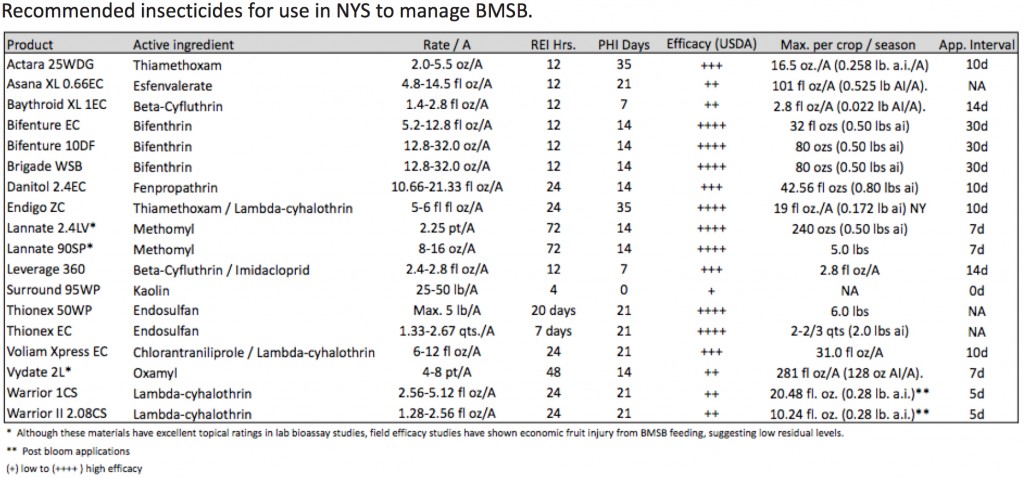
Mid-Atlantic and NY studies have found that the #10 lure, a BMSB aggregation pheromone (3S,6S,7R,10S)-10,11-epoxy-1-bisabolen-3-ol), is more effective at capturing BMSB through the early and mid-season, while black light trap captures increase in mid to late season. The MDT lure (methyl (E,E,Z)-2,4,6-decatrienoate) increases in captures beginning in mid-August. The combination of both #10 and MDT and black light provide presence data throughout the season with the black light trap indicating adult movement, often during the emergence of the 1st generation adults.
Management strategies to determine the most effective and least labor-intensive method for employing pest management include using a 40 per trap per week threshold and the monitoring of BMSB populations using a tiered scouting method in tree canopy to trigger management. ‘Tiered Scouting’ would begin upon first trap capture, scouting along wooded edge orchard perimeter in bordering apple rows. If BMSB is observed in the tree canopy and or 40 BMSB per trap / week are observed, then applications of effective insecticides are warranted.
It is important to note that feeding injury to pome fruit often does not appears for two to three weeks. Waiting for fruit injury to appear after thresholds have been reached would likely result in severe and economic injury. Highest populations and fruit injury occurs along the 1st 90 feet of orchard rows bordering woodlands.
Laboratory studies conducted at Cornell’s Hudson Valley Laboratory have shown field applied insecticides generally have very low degrees of efficacy for residual control of the BMSB and as such will need a tight frequency of 4-7d intervals based on migration levels moving into the orchard. Topical applications directed at the adult and nymph have shown significantly higher levels of mortality using older chemistries such as the carbamate Methomyl (Lannate LV) and Endosulfan (Thionex), pre-mix formulations that combine a pyrethriod and a neonicotinyl insecticide such as Endigo ZC (Lambda-cyhalothrin and Thiomethoxam) and Leverage 360 (Imidacloprid and beta Cyfluthrin) are also very effective. The most effective pyrethroid appears to be bifenthrin (See previous post in approved Section 18 for Bifenthrin).
The reduced risk insecticide Assail (Acetimprid), in combination with 1% Pure Spray oil was shown to inhibit feeding in laboratory bioassay studies with increased mortality using the adjuvant Incite (PBO). The use of Surround WP was shown to increase mortality slightly when used alone and in combination with insecticides. 

